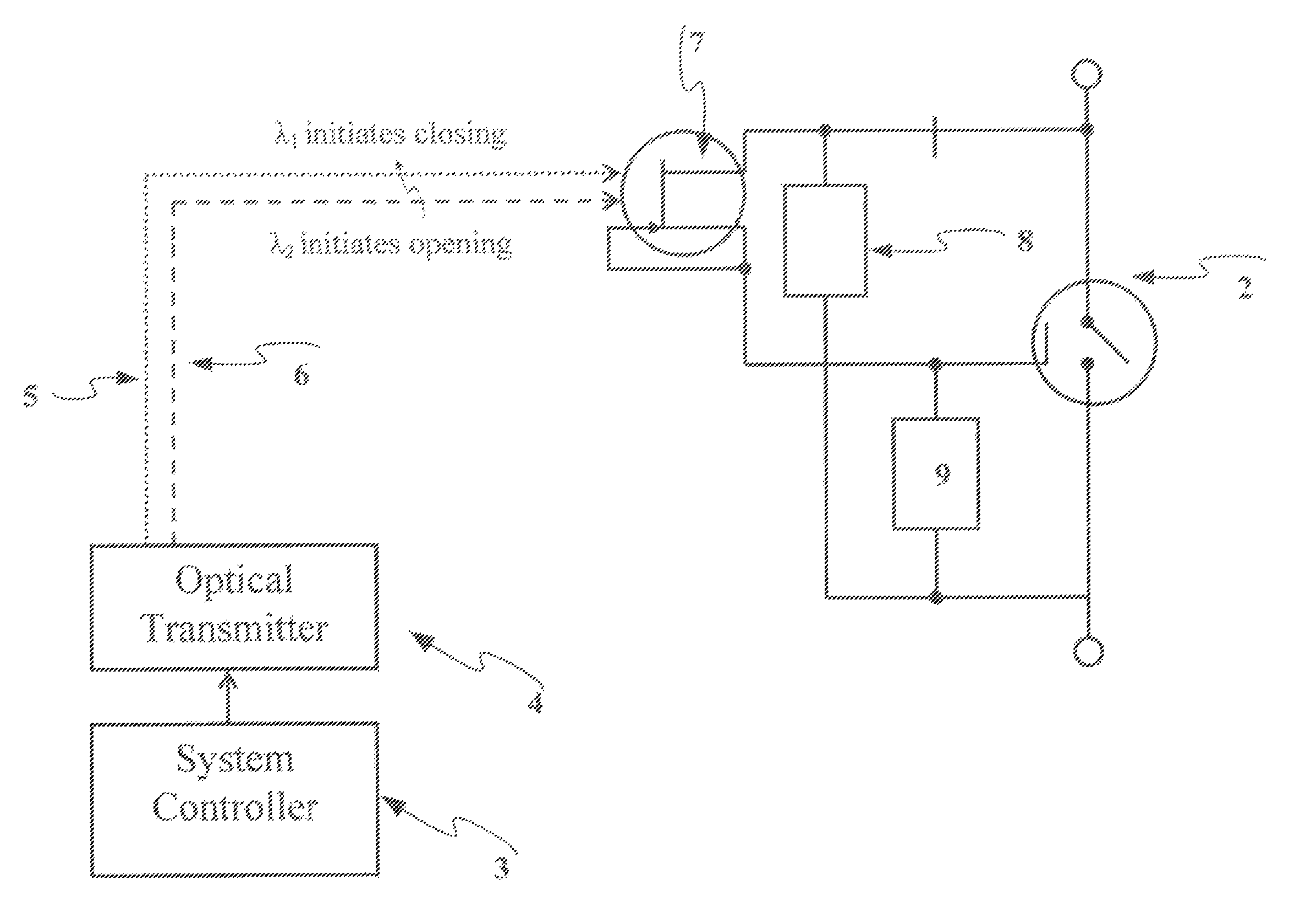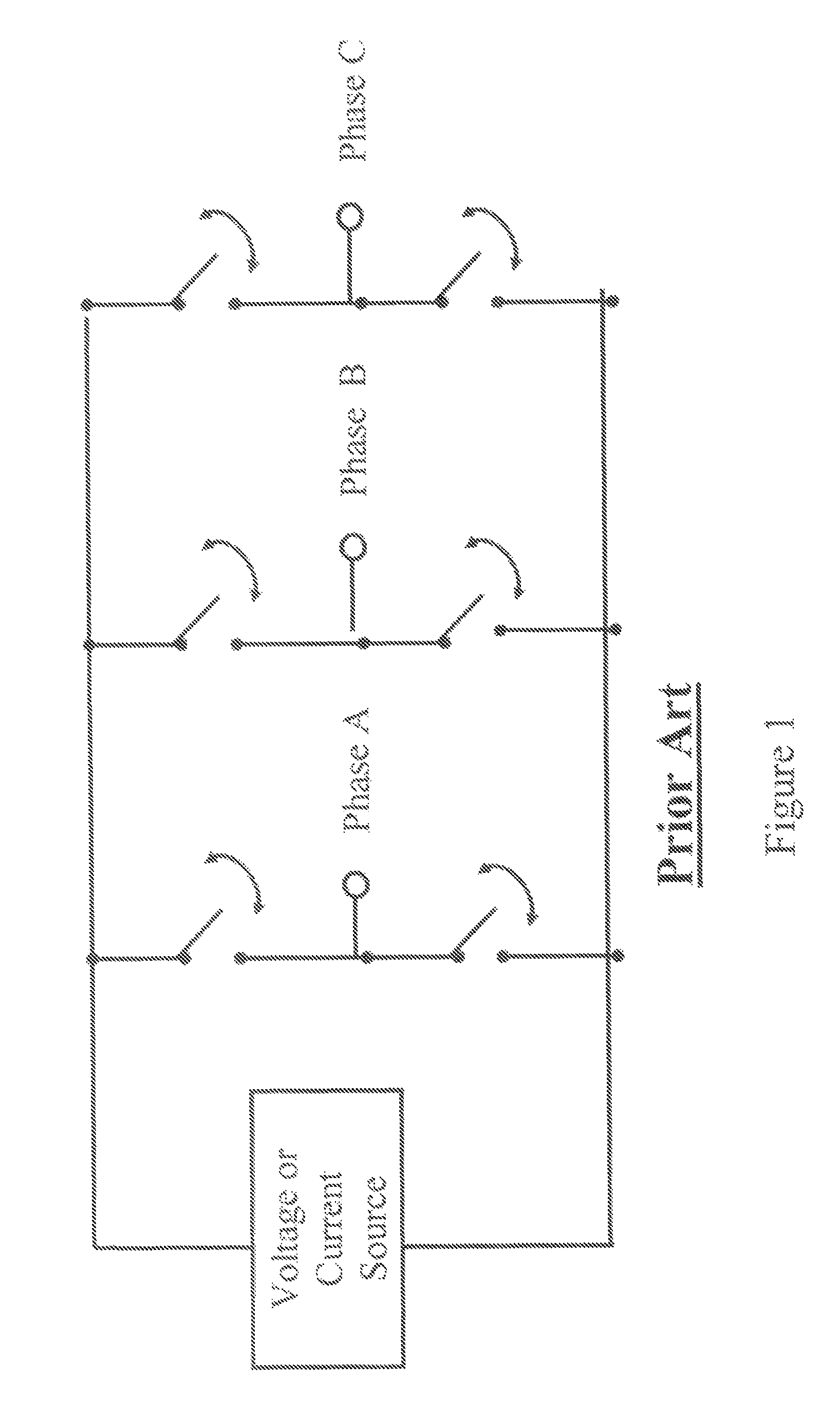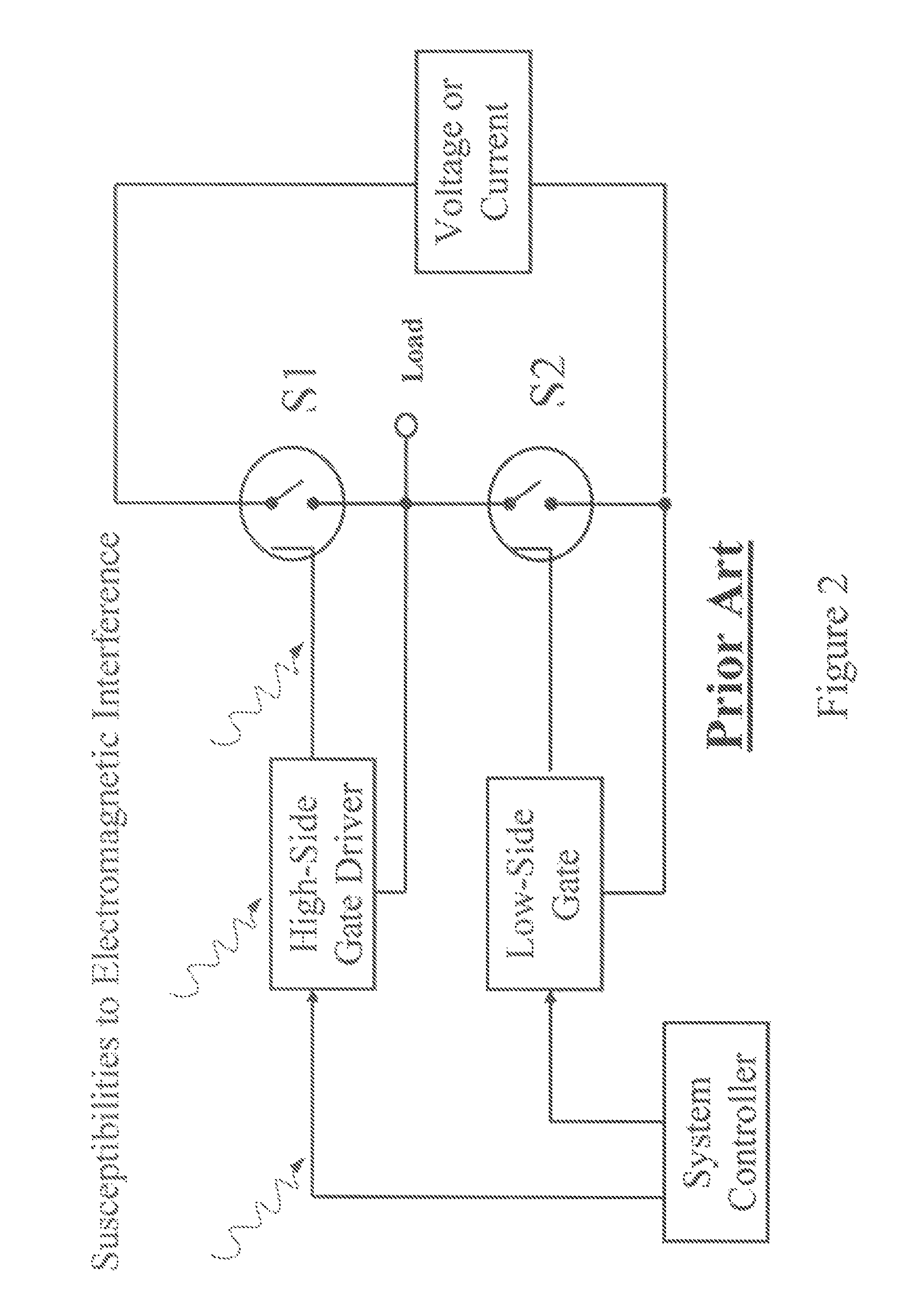Optically controlled silicon carbide and related wide-bandgap transistors and thyristors
a wide-bandgap transistor and thyristor technology, applied in the field of advanced microelectronic (semiconductor) devices, can solve the problems of increasing complexity and cost in the final system, failure to occur in either the circuit or the load, and additional threat of intentionally introduced emi from enemy action
- Summary
- Abstract
- Description
- Claims
- Application Information
AI Technical Summary
Benefits of technology
Problems solved by technology
Method used
Image
Examples
Embodiment Construction
[0039]The present invention provides for a silicon carbide optically active material used to create an entire class of power devices and integrated circuits with significant advantages in circuits requiring or benefiting from control by pure optical gating. An example of one such application is the circuit 1 shown in FIG. 7. The circuit is a half-bridge power circuit containing two transistor switches 2, one in the “high side” position and one in the “low side” position. A controller 3 drives a source of electromagnetic radiation 4 which can produce beams of electromagnetic radiation of one wavelength 5 and of a second wavelength 6 such that the first wavelength is less than the second wavelength. Both the high-side and the low-side switches can be illuminated with either of the beams in arbitrary sequences as determined by the controller. Such half-bridge circuits would have application by themselves in various electrical power supplies, or as output stages in integrated circuits. ...
PUM
 Login to View More
Login to View More Abstract
Description
Claims
Application Information
 Login to View More
Login to View More - R&D
- Intellectual Property
- Life Sciences
- Materials
- Tech Scout
- Unparalleled Data Quality
- Higher Quality Content
- 60% Fewer Hallucinations
Browse by: Latest US Patents, China's latest patents, Technical Efficacy Thesaurus, Application Domain, Technology Topic, Popular Technical Reports.
© 2025 PatSnap. All rights reserved.Legal|Privacy policy|Modern Slavery Act Transparency Statement|Sitemap|About US| Contact US: help@patsnap.com



